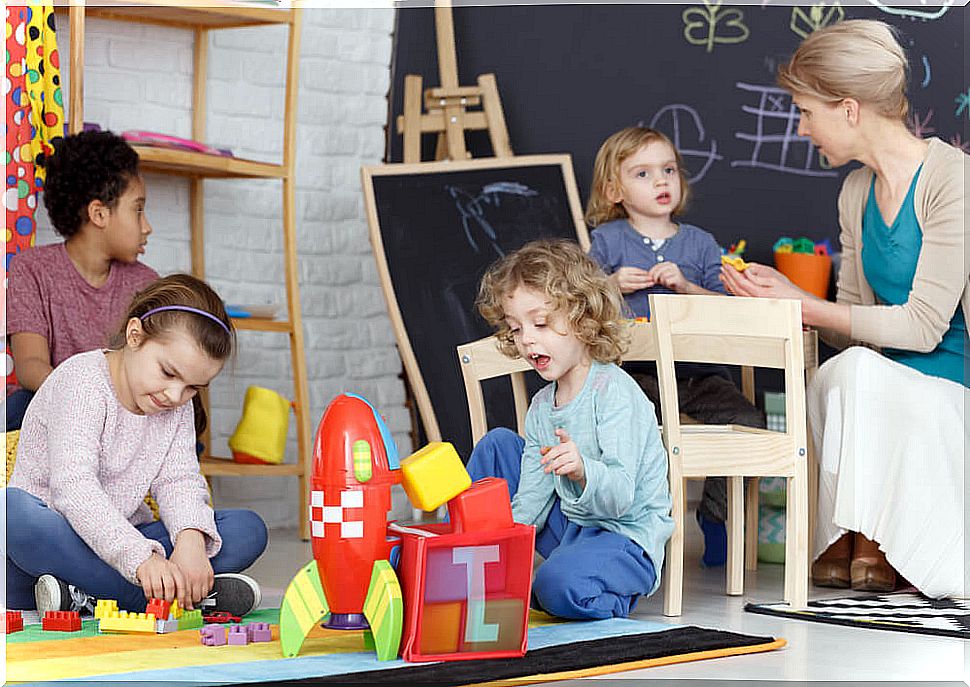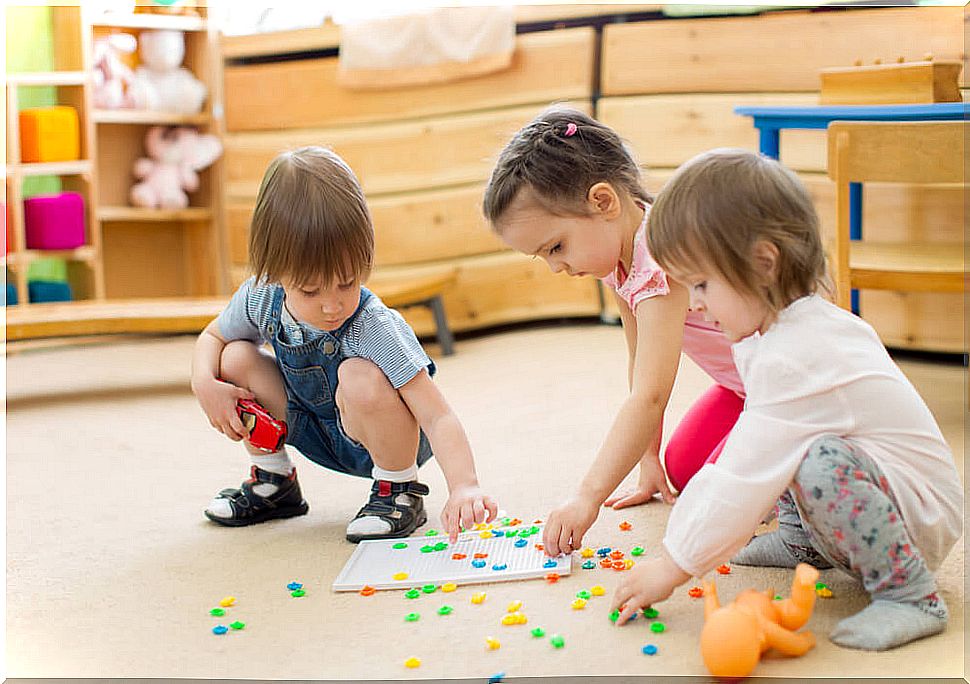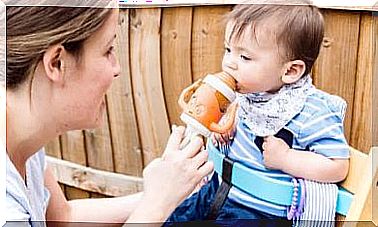The Game As A Methodological Axis In The Childhood Stage

In the childhood stage, and specifically in the educational context, play as a methodological axis is the basis on which children’s teaching-learning activities are organized. Play encourages imagination and creativity, and allows children to achieve meaningful learning without being aware that they are learning because they are doing it by playing.
Game classes
There are a multiplicity of games that can be classified according to the space in which they are played, for example. Thus, there are games that can be played indoors, such as symbolic or reasoning and logic games, or outdoor games with objectives more related to physical and motor development.
Furthermore, the games can be classified depending on whether they are free and spontaneous, or they are directed. In the former, children let their creativity and imagination fly, and in the latter, it is the educator who sets specific rules regarding how it should be done, controlling that these are carried out.
On the other hand, games are also classified according to the number of participants. There are solitary games, such as a puzzle, games in pairs, such as clapping, and many other games in which more than two children can participate.
The games according to the functions they help to develop
The games, in addition, vary according to the functions that are exercised while playing, and the characteristics of the activity that the children develop. These games can be:
- To exercise the senses. Like, for example, identifying sizes and textures, or listening to sounds of animals or nature.
- Engines. These involve movements like jumping, running, going up and down, etc.
- Manipulative or construction and assembly. To exercise actions such as catching, pressing, threading, screwing, holding, fastening, emptying, filling, balancing, etc.
- Symbolic. Situations and scenes from real life are imitated, representing roles, situations and people.

- Verbal In which the word is central, such as riddles, riddles, stories, tongue twisters.
- Of logical reasoning. Games such as puzzles, wooden tetris or chess for children, lay the foundations to develop calculation skills by assimilating mathematical concepts such as serialization, classification, and correspondence.
- To exercise spatial relationships. They are games to do, generally, in large spaces and in which to do activities that involve the discrimination of obstacles, exits, hiding places, measurements and distances.
- To exercise temporary relationships. In these games you can learn to differentiate the seasons of the year, or the parts of the day and their relationship with the activities that are carried out. Like, for example, in the morning he goes to school and in the afternoon he has a snack.
Main characteristics of the game as a methodological axis
As we can see, there are a large number of games. These games can be classified according to various criteria but, ultimately, whatever type of game it is, they all share common characteristics that define their nature. These are:
- It is a way of interacting with the environment and with reality.
- Its purpose is intrinsic; it is not played for any other purpose.
- It is spontaneous, voluntary and motivating.
- It allows that, at the same time that it is played, all the psychic and physical capacities of the human being are developed, contributing to the progressive construction of their own identity and autonomy.
- It is an educational resource par excellence because it favors increasingly complex meaningful learning. It allows the acquisition of abilities and skills, behavior guidelines and values.
- It is a source of pleasure, satisfaction, entertainment and fun.
- It allows the free expression and manifestation of children, their feelings and moods.
- It fulfills a compensatory function of inequalities and integrates and, sometimes, rehabilitates.
- It allows the relationship with others and favors socialization.
- It develops fantasy, imagination and imitation, allowing children to create fictional realities by using different acting strategies.

The game as a methodological axis in the childhood stage
The educational stage called infantile serves children from birth to 6 years of age, and is arranged in two cycles. The first, which includes up to 3 years of age, and the second, which ranges from 3 to 6 years.
This educational stage refers to a fundamental period in the growth of children, regarding which, our educational system establishes that play is the fundamental methodological way to organize the teaching-learning processes and the organization of content.
Play as a methodological axis has its reason for being because it allows progressive progress in the different areas of children’s development, social, emotional, cognitive, physical and motor development. Specifically, the game in this specific educational stage develops the following capacities:
- Linguistics. A mpliando the vocabulary and improve oral expression and comprehension.
- Physical-kinesthetic. Working on gross and fine motor skills, and mastering the body scheme.
- Mathematical logician. Through problem solving, attention and memory.
- Spatial and temporal. Exercising location and orientation, and also visual memory.
- Musical. Through discrimination and auditory memory.
- Interpersonal . Influencing cooperation, communication, solidarity, teamwork and conflict resolution.
- Intrapersonal . By working with the management of feelings and emotions, self-esteem, self-discipline, self-criticism, patience, and responsibility.









